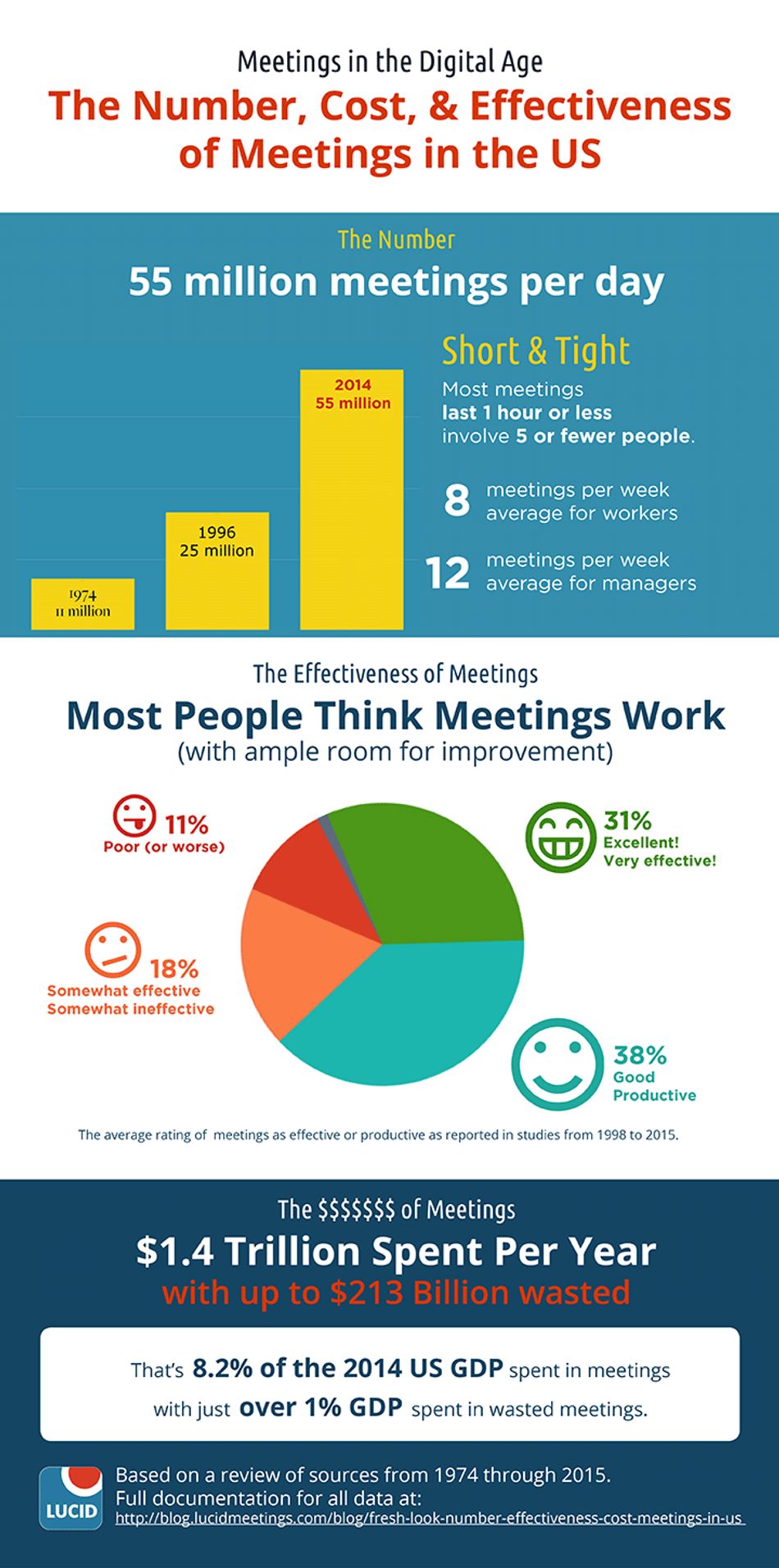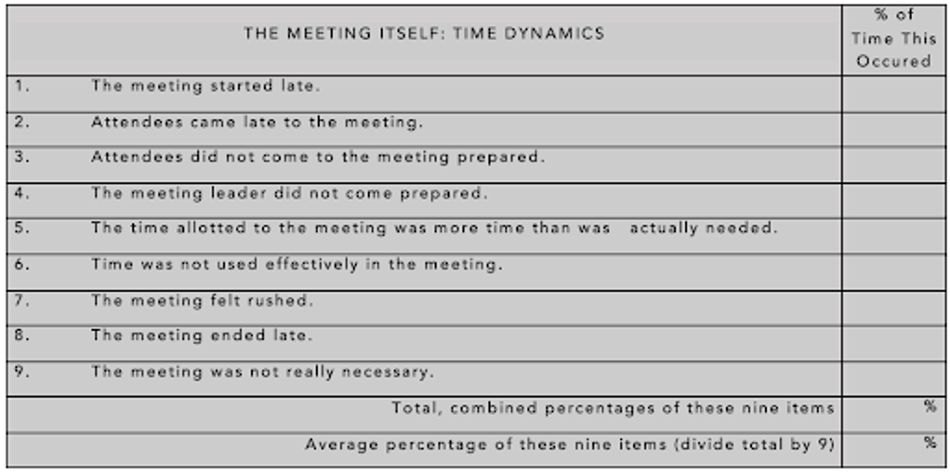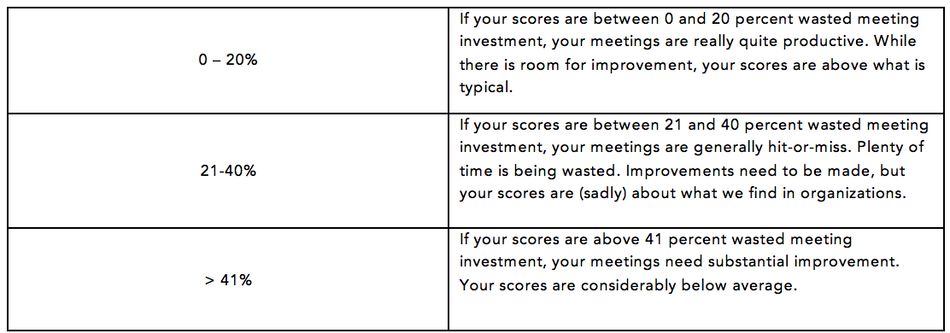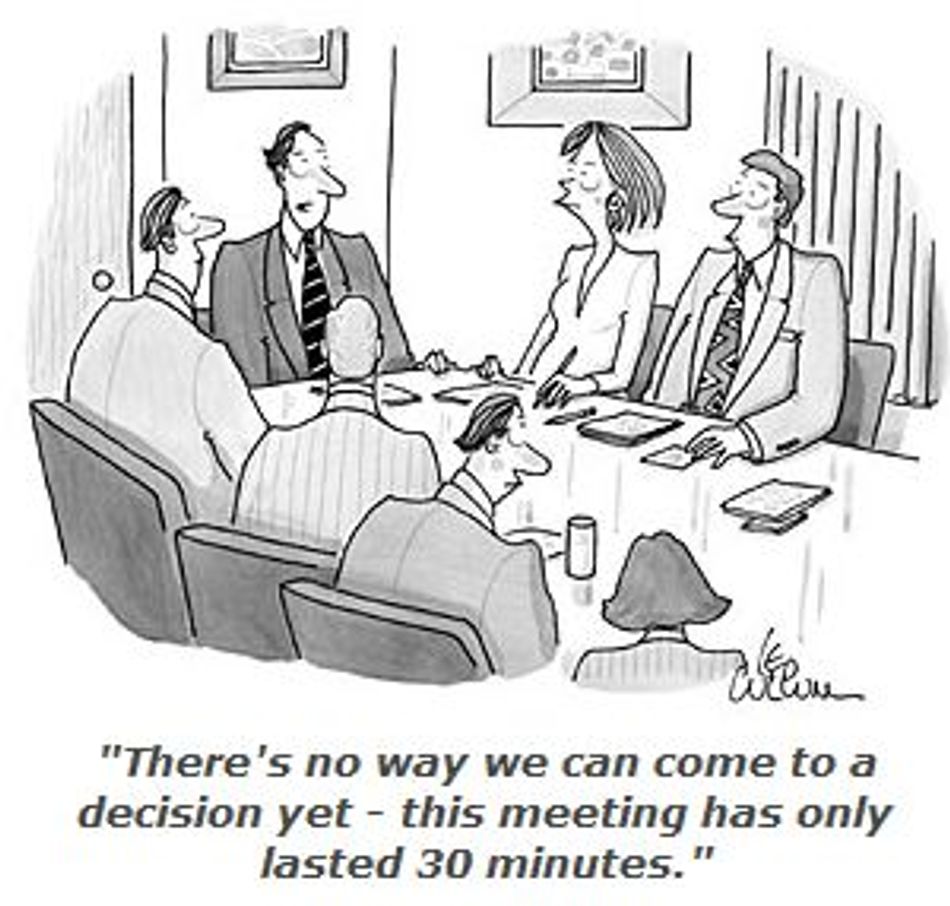
It was a Monday morning, and as usual, I was thinking to myself, “If I didn’t have to go to our weekly meeting, I’d like my job a lot more.”
I was working as a head of growth at an early stage software company, and my job primarily consisted of orchestrating the efforts of our marketing team. My role at this startup was mostly managerial. I wasn’t producing anything tangible, like writing content or building products. I was getting paid to coordinate other people’s work.
Meetings were essentially 80% of my workday.
Yet, I despised our meetings. I even got used to starting every call with “Let’s keep it brief. I want to get more work done.”
At first, I used to accept the boring—even painful—nature of our regular team meetings. “Meetings are supposed to be this way, after all.” I calmed myself.
We had bigger problems.
We were far behind our growth goals, and our marketing activities weren’t moving the needle. We were busy trying to bring more traffic to our website and converting more leads. We didn’t have time to fix our meetings.
Later, I came to the conclusion that our broken team meetings were one of the main culprits of the lack of results in our marketing.
“The hard truth is, bad meetings almost always lead to bad decisions, which is the best recipe for mediocrity.”
—Patrick Lencioni, Death by Meeting
It's unfortunate that in our current state of business, the team meeting is seen as the ultimate time-waster. That according to 47% of 3,164 workers in a study conducted by Salary.com focused on workplace time drains.
And in some bad cases meetings can be perceived as torture. In another study conducted for Clarizen, 50% of respondents indicated that they would do any unpleasant activity rather than attend a status meeting.
Most companies accept poor meeting habits as the norm across their organization. Others, in their hopes to fix toxic team communication, try to avoid meetings altogether.
Here’s the thing: Meetings are not in and of themselves the enemy. Bad meetings are the problem.
The truth is there’s no substitute for a productive meeting. An effective meeting can have a hugely positive effect on your team morale and yield tremendous organizational benefits and, inevitably, great results.
In this post, we’re going to share a few practical tips on how to fix your bad team meetings and run effective, dynamic, and focused meetings instead. Hint: it’s not about the quality of your webcam or your video conferencing tool.
But first, let’s see why a broken team meeting can be so damaging to your company.
The cost of bad team meetings in the workspace
The true cost of meetings is staggering.
If you think about it, every time you schedule an hour-long meeting, attended by 5 people of your team, you’re essentially trading away 5 person-hours of productive work. That’s excluding the energy costs of switching and frustration.
“It is estimated that the annual cost of meetings in the United States is a whopping $1.4 trillion—or 8.2 percent of the 2014 US GDP. Translating this into dollars, one reasonable estimate is that over $250 billion a year is wasted by having too many bad meetings.”
—Steven G. Rogelberg. The Surprising Science of Meetings
According to research by LucidMeetings, there are 55 million meetings a day in the US alone, compared to just 11 million meetings in 1974.

Why do we have so many meetings? According to Harvard Business Review, meetings facilitate more democratic decision-making, more input from all levels throughout the workspace, and more opportunities to create alignment and connections through personal communication.
Therefore, the question we should ask ourselves is not how to have fewer meetings, but how to have fewer bad meetings?
How to identify if your team meetings are broken
Considering the high cost for meetings, have you ever asked yourself what your company's return on meeting investment is?
One way to quantitatively estimate the efficiency of your meetings is to use the Meeting Quality Assessment Tool. It’s a survey-style calculator that asks you to indicate the percentage of time that negative things happen in your sessions.
The survey is broken down into 5 sections:
- Meeting design
- Time dynamics
- Interpersonal dynamics
- Discussion dynamics
- Post-meeting
You’ll be asked to indicate things like whether the meeting has started late, whether a meeting agenda was provided, and if the meeting was really necessary at all.

At the end of the assessment, you’re also provided with a concise guide to read your results.

So where does your team meeting fit?
5 problems of a broken team meeting and how to fix them
Horrible meetings usually share the same set of traits. If one or more of the points below resonates with you, then you have to work on fixing your team meetings!
1. The meeting is boring
Is your team meeting dull, unengaging, and tiring?
Humans are habitual. Our tendency to favor routines affects the way we run meetings. Most of our meetings are scheduled, which entails that we go through the same process and dynamics every week and day.
For that reason, meetings can quickly become monotonous.
To amplify this pain, people usually have other things to do, which leads to attendees multitasking on their phones through the meeting.
How to fix it
Patrick Lencioni, writer of the Death by Meeting, encourages companies to use conflict in their meetings. Most companies fear conflict. Interpersonal tension and heated disagreements are usually avoided among colleagues.
Instead of aiming for this noble pursuit, Lencioni advises that teams should strive to create engaging conflict.
“To make meetings less boring, leaders must look for legitimate reasons to provoke and uncover relevant, constructive ideological conflict. By doing so, they’ll keep people engaged, which leads to more passionate discussions, and ultimately, to better decisions.”
—Patrick Lencioni. Death by Meeting
Meeting attendees need to “mine for conflict.” By addressing the uncomfortable topic head on, you promote transparency and alleviate the pain of pretending that the issue doesn’t exist in the first place.
Promoting conflict among teams that are used to a more diplomatic way of running their meetings is certainly difficult. To facilitate this process, Lencioni suggests that the team leader should announce real-time permission and encourage people to be confrontational.
Using a movie analogy, Lencioni also suggests that meeting openings should be inspiring. Similarly to how movies work, if you fail to hook your listeners in the first 10 minutes, you’re through.
Let’s say, for example, that you need to kick off a meeting with a discussion about the future migration of your online servers. Instead of boring people to sleep by diving into the technical features of servers, you can say something like:
“I know that the next 30 minutes might be tiresome and that there are many other things we’d all rather be doing right now. But let’s keep a few things in mind while we’re here today. The decisions we make now about our server infrastructure will have a profound impact on our customer satisfaction in the long term. Let’s get this right today and save ourselves the time of having to deal with hundreds of complaints about the speed of our site 3 months from now.”
2. The meeting is unnecessarily long
Most of the team meetings you have are probably recurring, and you use a tool like Google Calendar to schedule them. You set aside 15, 30, 60, 120 minutes on your calendar.
In my personal experience, I’ve never participated in a meeting that ended sooner than it was planned to. In fact, most meetings last longer than the original allocated time.
Partly, this is due to someone on the team turning a standup meeting into a strategy meeting or the whole team collectively drifting off subject.
But another likely reason is that we’re predisposed to Parkinson’s Law.
Work expands so as to fill the time available for its completion.

It’s the same with team meetings; the meeting will expand so as to fill in the allocated time on your calendar (if not more). Or in a more pessimistic corollary: the meeting can “complicates to fill the available time.”
How to fix it
Let’s review a few tactics to tackle unnecessarily long sessions.
You can ensure that the meeting ends on time by using a timer.
“Set a timer. When it rings, the meeting’s over. Period.”
—Jason Fried and David Heinememeier, Rework
To counter the detrimental effect of Parkinsons’ law, Rogelberg suggests that once you have a reasonable estimate for your meeting, consider dropping it by 5–10%.
For example, if you have two-hour long weekly meetings, try cutting down the default meeting length to 100–110 minutes.
In their book Peak Performance, Brad Stulberg and Steve Magness use personal anecdotes and several studies to prove that the right amount of stress leads to the optimal performance.

By putting a little bit of pressure on attendees to finish sooner, your team is likely to perform better and be more engaged and focused. But you don’t want to stress your team so much that you cause them to burnout.
3. The meeting starts late
At the software company I worked at (the one from the beginning story), meetings always started late. I will always remember that one time that we had to wait over 40 minutes for the sales department to wrap up their previous meeting.
Late meetings create more late meetings, which creates an enormous strain and impacts the morale and patience of those team members that are not late.
Rogelberg observed that meetings seem to start late 50% of the time. I’m not surprised—in our company we never had a session that started right on time.
Late meetings result in interruptions and unhealthy tension in team members, which leads to more poor decisions and fewer good ideas.
How to fix it
One solution is to avoid back-to-back meetings altogether.
If you decide that you absolutely need to schedule back-to-back meetings, make sure you allow for a comfortable transition between meetings. As discussed in our previous point, dropping a few minutes of your meeting would not only save you some time but also help for a timely transition.
Another tip is to create multiple calendar reminders and make sure everybody has their push or email notifications turned on. Setting up multiple reminds in tools like Google Calendar and Todoist is a breeze.
4. You have no clue what the goal of the meeting is
Lack of contextual structure is one of the biggest problems team leaders face when it comes to running an effective meeting. Like a badly prepared mixed dish, they throw every type of task and issue into the same meeting: status updates, team check-ins, tactical debates, high-level strategy, quarterly metrics review, the list goes on.
People end up with no clue about the ultimate purpose of the meeting. Should they inform, discuss, brainstorm, dispute, vote, or listen?
This confusion results in an enormous waste of time and ineffective meetings. Here’s our 2-step action plan to fix this.
How to fix it
First, you have to be clear with yourself and your team—what’s the actual purpose of the meeting?
“To make our meetings more effective, we need to have multiple types of meetings, and clearly distinguish between the various purposes, formats, and timing of those meetings.”
—Patrick Lencioni. Death by Meeting
Lencioni suggests 4 types of meetings based on their goal, setup, and length.
- Daily check-ins
- Weekly tactical
- Monthly Strategic
- Quarterly off-site review

Source “Death by Meeting”
Now that you’re clear on the exact type of the meeting, the next step is to create its structure.
Range helps you create agendas that are right for your team while prompting you to check for unplanned discussion topics.
Structuring your meeting is easy in Range—you can create different types of topics: start the session with an opening round, recurring agenda items, discuss today’s topics, and end with closing topics.

5. There are too many people in the meeting
Contrary to conventional belief, having too many people in your meeting doesn’t promote an increase in collective wisdom, ideas, and additional perspectives. Just the opposite—big groups reduce the effectiveness of your team sessions.
Research by Bain & Company shows that “every person added to a decision-making group over seven reduces decision effectiveness by 10%.” If you add the numbers up, a group of 17 or more people will never make a decision
How to fix it
As a rule of thumb, try to invite as few people as possible to your team meetings.
Bain & Company suggests that the only people that need to attend the meeting are the decision-makers. To mitigate the adverse effects of crowded meetings, consider inviting only those team members with a decision-making role or relevant knowledge to influence your team’s decision.
Fix your broken meetings with Range
Team meetings are tough to get right, but there’s hope. With the right knowledge and effective tools in place, you can lead your meetings to peak performance.
If you’ve been experiencing challenges with your meetings—or if you’re simply looking to try a new approach—try us out and let us know what you think. Start your free trial of Range and begin improving how your team runs team meetings today.
And check out our Guide to Standup Meetings to learn more about the ins and outs of standups, and how to get them right for your team.








